With water levels still slightly too high this morning for electrofishing surveys, we decided to take Jim and Niall, our two volunteers for the day, out tree planting. We are grateful for their generous support. It’s great to have their assistance and they seem to enjoy dong something that will help the fish and environment for years to come. We are always happy to take volunteers with us that are genuinely interested in what we do.
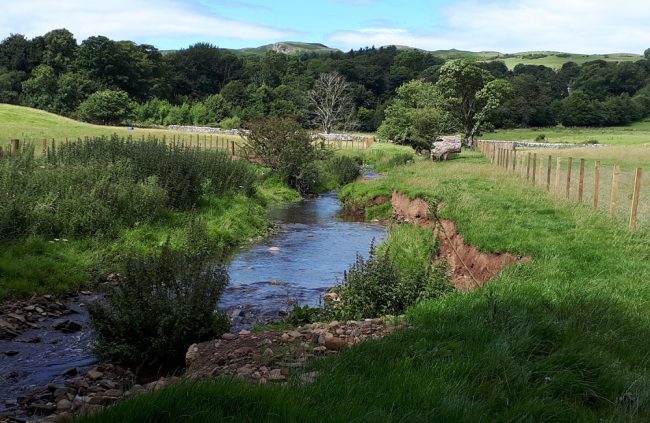
Fencing completed just a week or two ago and the grass is already growing longer than it has done in years. The burn is over wide and shallow as a result of over grazing and livestock access. Through time as the margins develop and trees grow, the burn habitat should improve as it deepens and narrows. With stronger vegetated banks, any erosion should be downward cutting of the bed leading to improved fish habitat in the form of pools, run riffle and glides. Marginal plants will offer cover for fry and parr.
After lifting about 35 trees from our nursery beds, we headed straight to the Culroy Burn in the Doon catchment and planted them without delay. This burn has just been fenced by ART and we are attempting to improve both fish habitat and water quality for the long term.
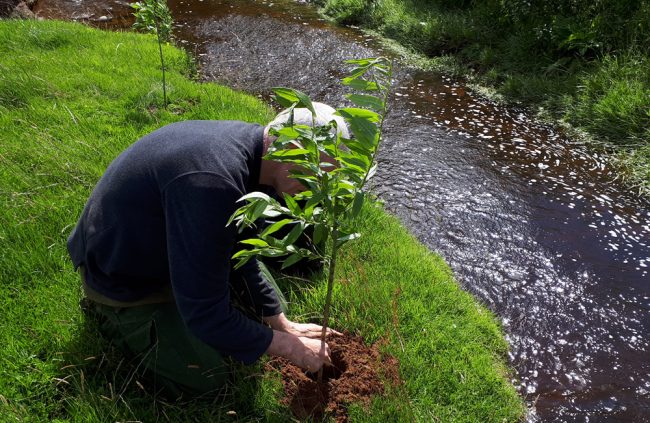
Jim planting another healthy rooted cutting. These willows are propagated from native trees we come across on our travels.
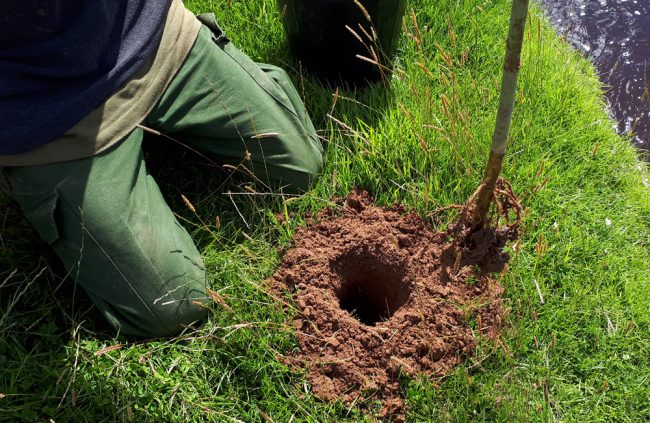
A tight hole about 75mm across and 400mm deep. The holes are flooded and the rooted cuttings placed in. Soil is them backfilled and the plants are held tight without the need for staking. It works well. This cutting was taken in April this year and has already developed a strong root system.
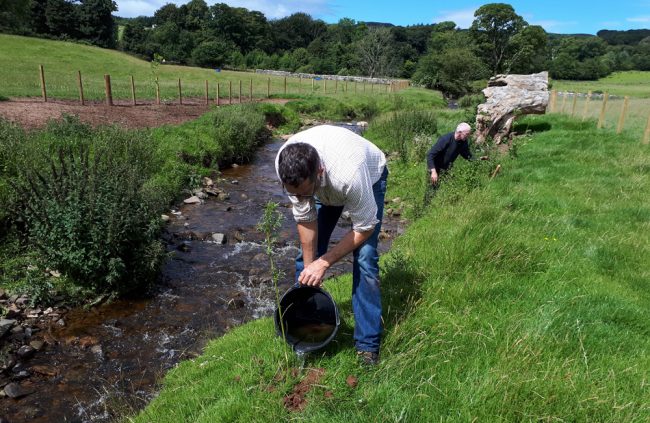
Niall soaking the trees again before we left. With rain forecast, they should do fine.
July isn’t an ideal time for planting but the trees have been rooted and grown on at the office over the last few months and we took great care to ensure they were carefully lifted, well watering in and that they had friable soil around their roots as they were planted in their new location near Sauchrie. We use a petrol driven auger to ensure we dig deep and tight holes to cut down soil disturbance and water loss. This method also ensures these rooted cuttings have adequate support without having to go to the expense of staking and tubing them. One of the things we’ve learned is that by taking 6 – 8′ cuttings early in the year, we can produce tall trees that don’t suffer from damage by grazing hares and sheep to the same extent as smaller ones. That’s not to say that we don’t take smaller cuttings, we do, but we think the taller ones are generally better for our purposes and we have even rooted them up to 8′ tall and 2-3″ in diameter this year. Planting cuttings like this in situ, means they won’t require to be transplanted and offers a quick green bank reinforcement. We like to experiment and are finding that we don’t need to follow convention.
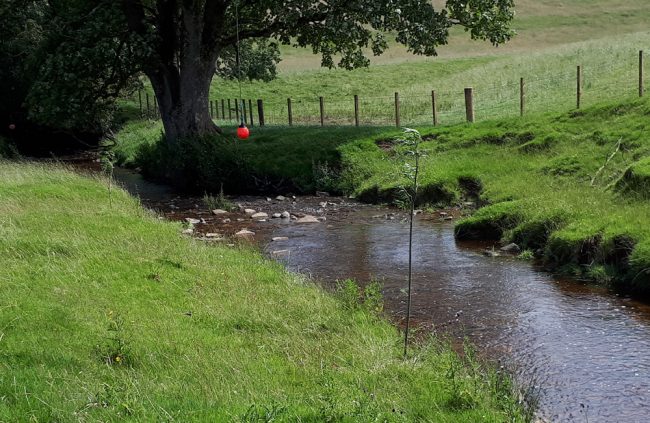
This willow cutting was taken a couple of months ago and was about 6′ in length. Once transplanted to the riverbank, it is instantly above the height that sheep can graze the leaves which may be useful in locations where fencing is lacking. The best course of action will always to be excluding livestock but this isn’t always possible. In this situation, we planted willow here so that in future, we may be able to lay some substantial branches and help narrow the water course. Adding large woody debris is another excellent way to improve habitat. This is a long term approach to habitat improvement but cheap and highly effective.
I expect the rooted cuttings we planted today will survive just fine and we will monitor rainfall over the next couple of weeks and water them if required. A little bit of care will ensure success. The forecast is for rain at the moment so we may not need to do any more for them. Getting them in now will allow them several months growth before the winter and a better start next year. Any bare soil was seeded today and should grass over quickly.
This newly fenced stretch of burn will quickly improve and again, I find I’m wishing a year or two away to see how it progresses. The Doon DSFB contributed towards 40% of the cost of the fence with ART arranging the agreements and project managing this and other new fences for them. This is excellent use of the levies they collect from anglers and owners.

